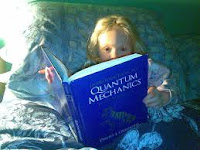 It has become acutely aware to me that there has been a decline in my agility over the past few years. It seems like it is occurring increasingly more in a geometric function rather than linear.
It has become acutely aware to me that there has been a decline in my agility over the past few years. It seems like it is occurring increasingly more in a geometric function rather than linear.Of course I could keep it at bay more if I took better care of myself, but I am trying (however there is room for improvement!).
I mention this because I was listening to a General Conference Address by Elder David A. Bednar of the Quorum of the Twelve Apostles. What he said gave me a different view on the whole Aging thing. I quote:
Several years ago I spent a Sunday afternoon with Elder Robert D. Hales in his home as he was recovering from a serious illness. We discussed our families, our quorum responsibilities, and important experiences.
At one point I asked Elder Hales, "You have been a successful husband, father, athlete, pilot, business executive and Church leader. What lessons have you learned as you have grown older and been constrained by decreased physical capacity?"
Elder Hales paused for a moment and responded, "When you cannot do what you have always done, then you only do what matters most."
The simplicity of his answer was enlightening to say the least. To me it is a simple guide to plan and prioritize both in matters spiritual and temporal.

